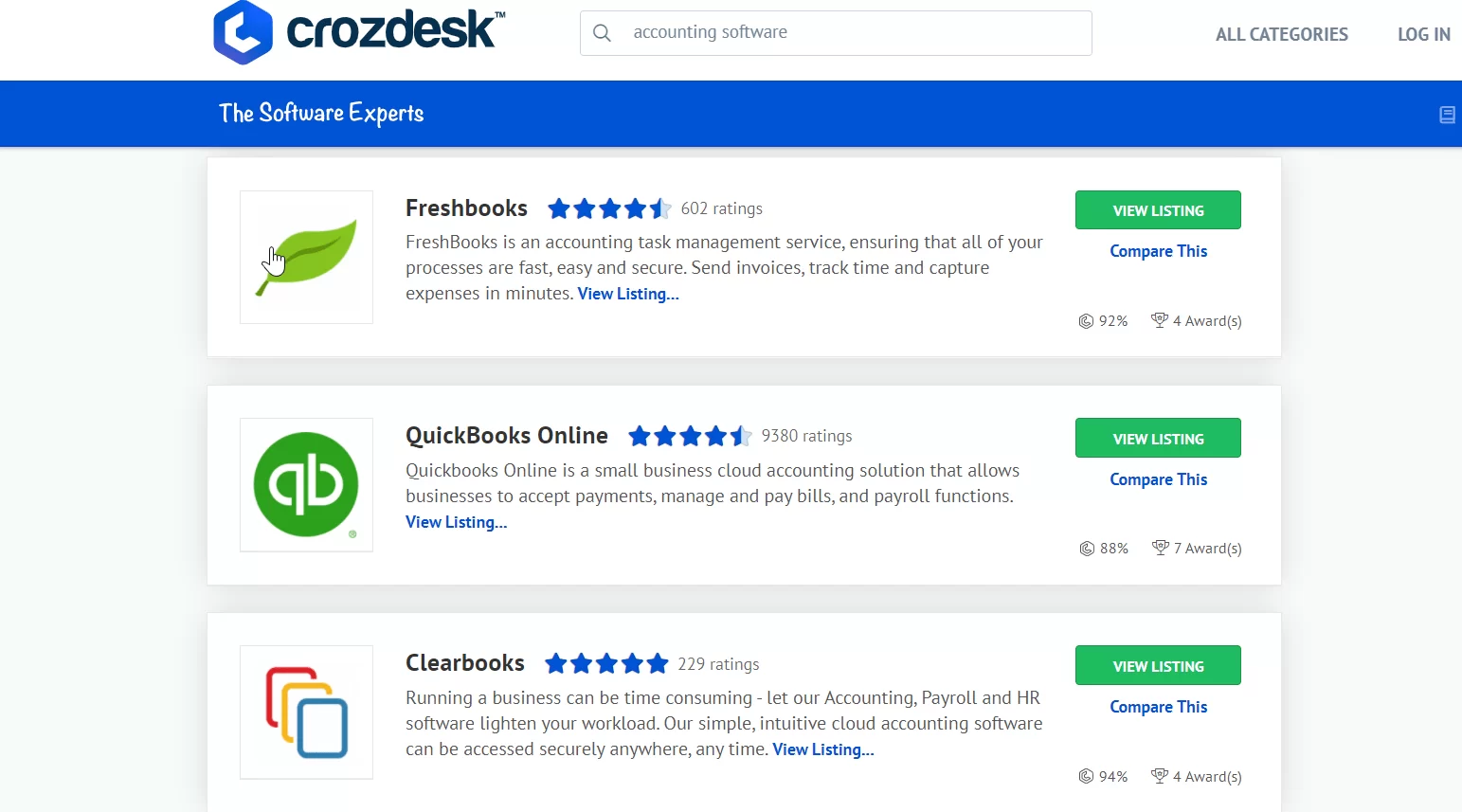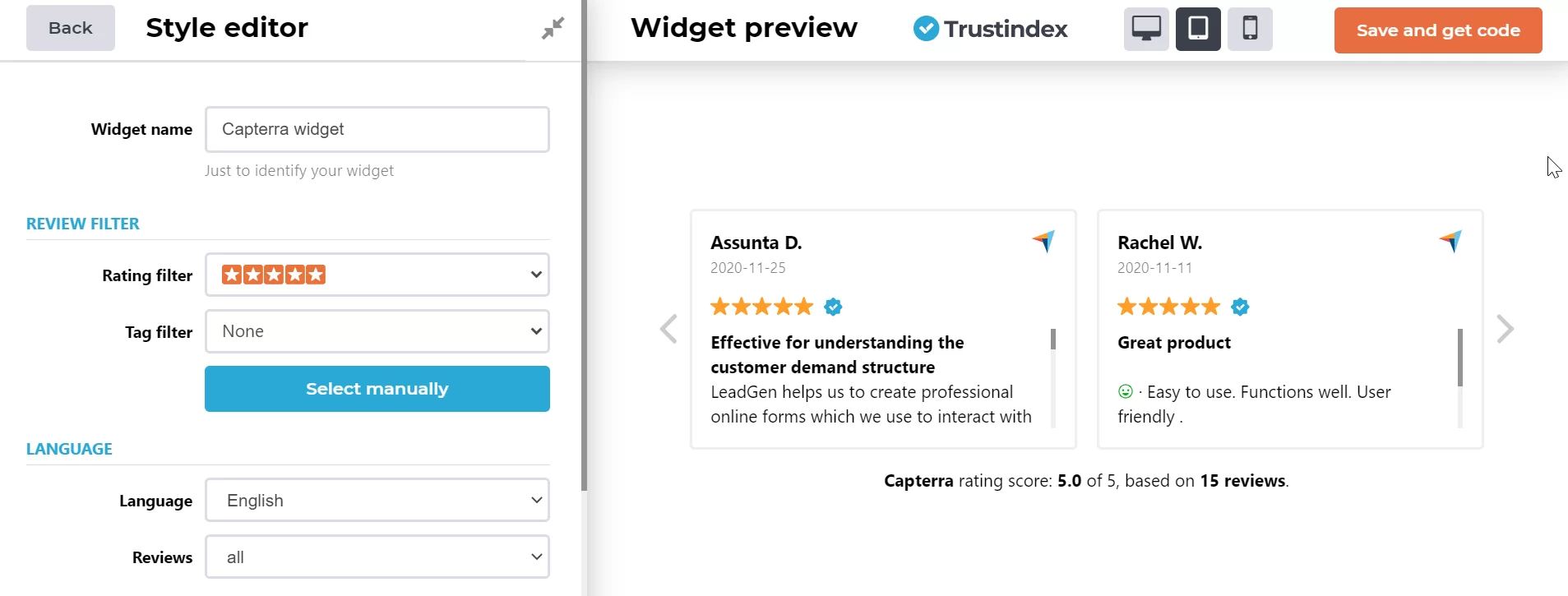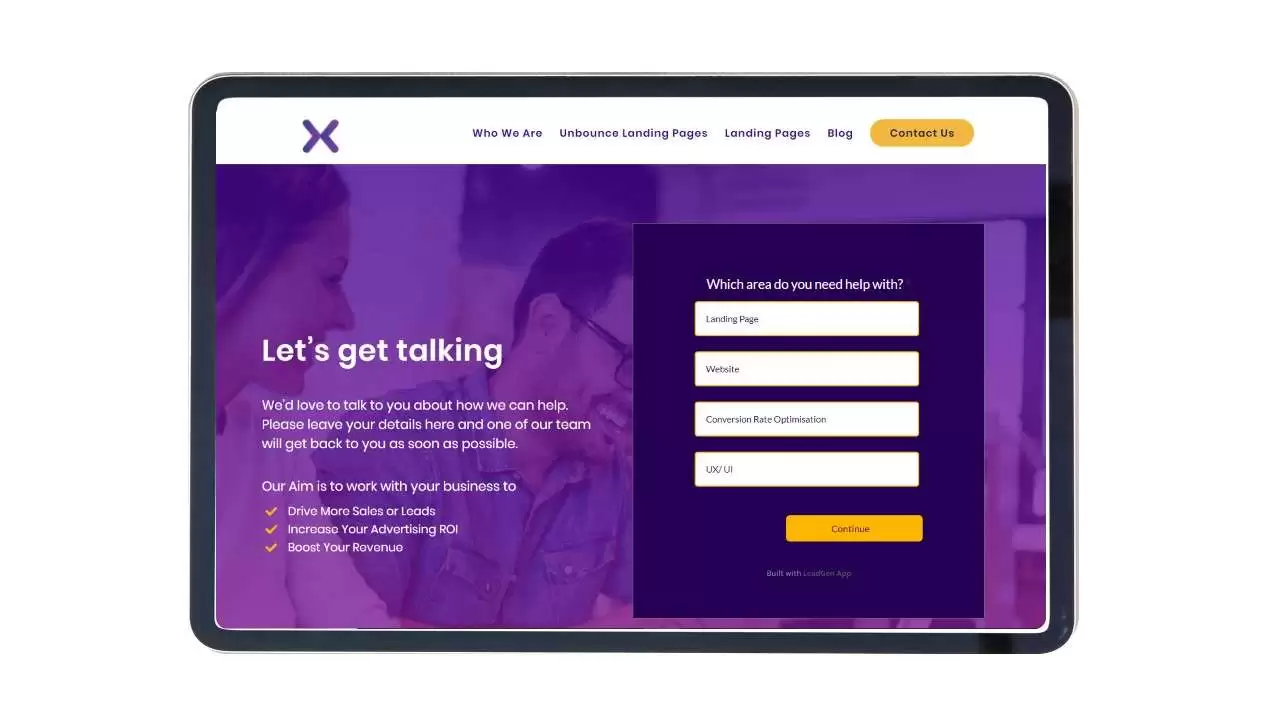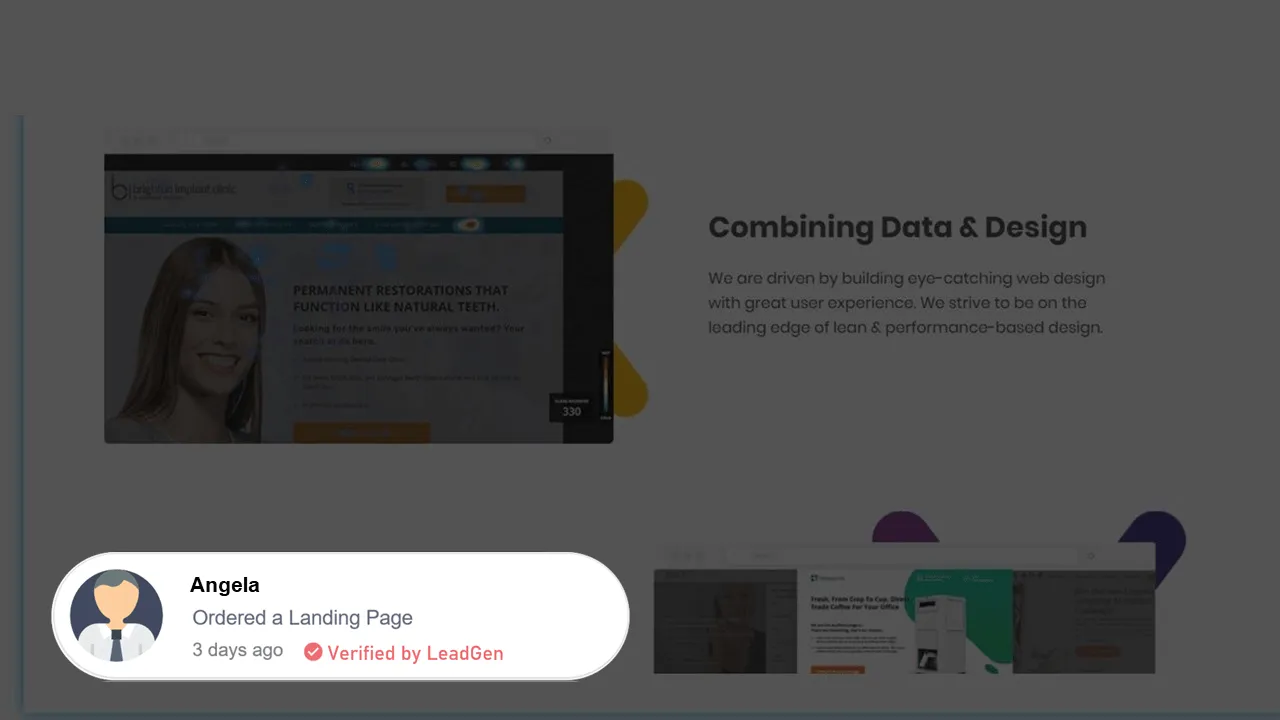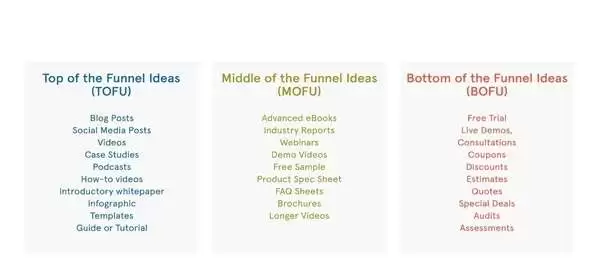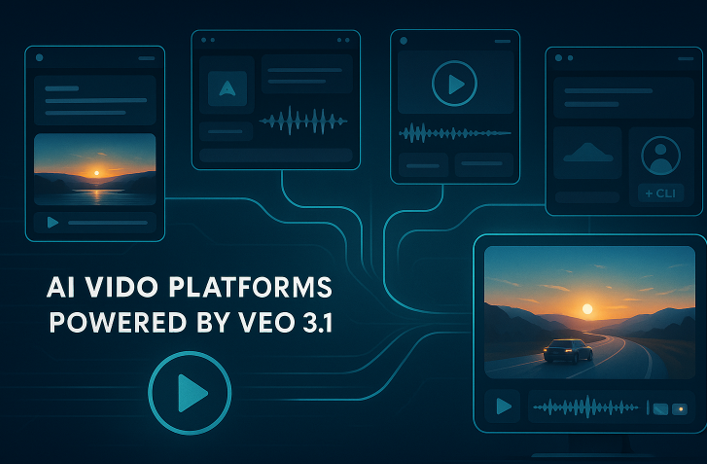Software Lead Generation Tactics To Get in Front of the Right Audience and Win New Leads
Lead generation is a crucial aspect of growing any business, and software companies and software-as-a-service (SaaS) brands are no exception. In today's digital age, lead generation has become increasingly important for software companies as more and more businesses are turning to technology to improve their operations and increase their efficiency. However, lead generation for software companies can be challenging, as it requires a unique set of strategies and tactics to reach the right target audience.
In this article we present 8 software lead generation tactics, explained below and via an video of an interview with Miguel Heinonen, SaaS founder of the employment platform Heirizon. He is an expert in outbound marketing and outreach and talks with LeadGen App Co-Founder Christopher Lier, discussing various channels for SaaS Lead generation. Using what we've learned from building up LeadGen App as a SaaS company, here is an overview of the best channels to get more leads if you are software or digital product business.
Combining inbound and outbound marketing, we'll present 8 tactics that will get you more visibility, engagement and leads.
B2B SaaS lead generation refers to the process of identifying, attracting, and nurturing potential business clients for a software-as-a-service (SaaS) product or service. This process is focused on reaching out to other businesses that may benefit from using the SaaS product or service, and aims to convert them into paying customers. B2B SaaS lead generation is different from consumer-focused lead generation as it targets businesses as the end-user of the SaaS product and it often involves a longer sales cycle and a higher purchasing price.
Conversation between LeadGen Co-Founder Chris with Miguel Heinonen, SaaS business owner, discussing SaaS lead generation tactics.
Here are the top 8 lead generation tactics for software companies:
1. Software discovery platforms:
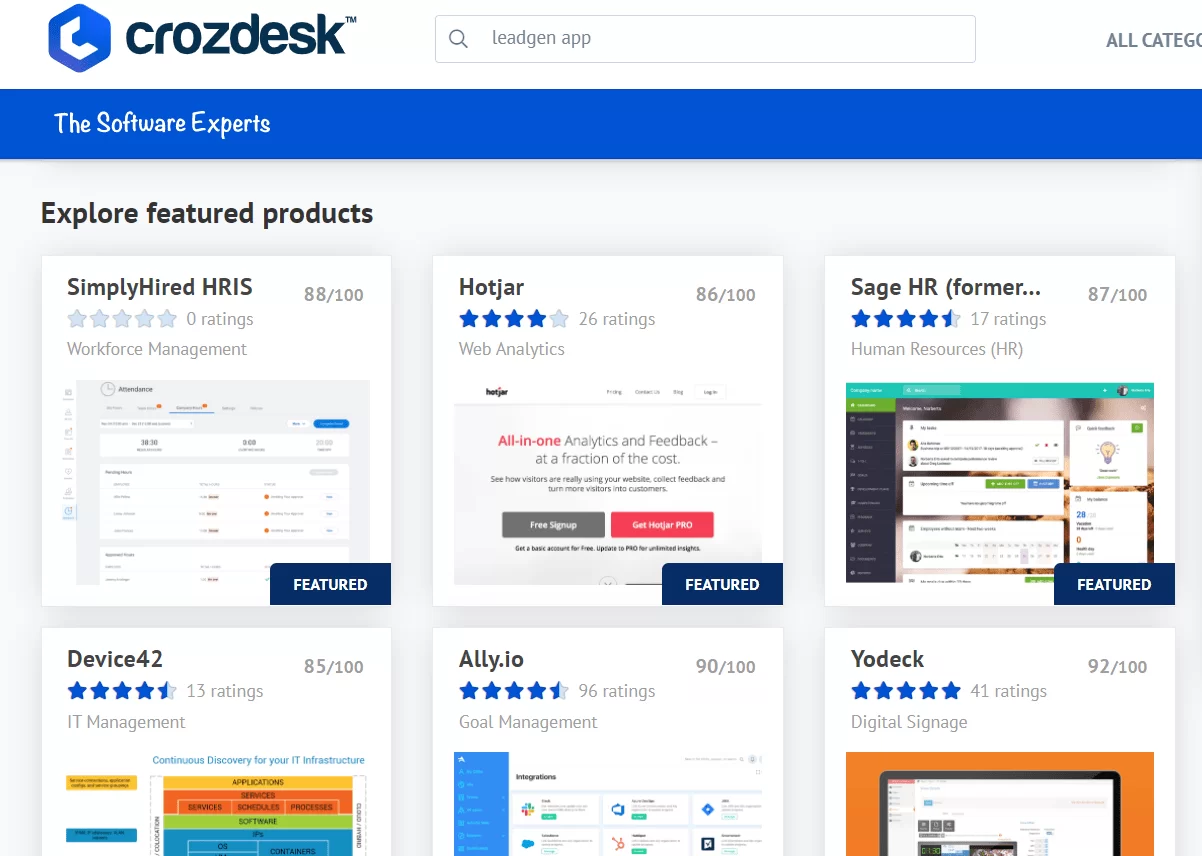
Software discovery platform Crozdesk
Software discovery platforms help to feature your software product in front of a high-quality audience, people and businesses that are looking for exactly what you have to offer as mentioned by the owner of this popular free SaaS website ytmp3.
Your target audience is likely going to do research via Google search for the type of software they need. Discovery come up on the top for category-related searches. For example, your market is looking for “best accounting software”, chances are that many software discovery platforms are going to appear first.
Best accounting software listings that pop-up when searching on Crozdesk
The top 3 that would always come are Capterra, Crozdesk or G2 crowd. When clicking on any of those platforms, the user will get to see the top accounting software tools. This means it not only matters to rank high organic Google search, but also within the software discovery platform.
Portals like Capterra or Crozdesk are great for lead generation. It’s important you are full production with your software, having end users, a good pricing system, and that you're not in beta to appear as a professional profile on software discovery platforms. Also make sure that you appear in multiple categories to maximize visibility.
Attracting reviews and building up a reputation on a software discovery platforms is seen as a trust signal. Most platforms offer badges that you can add to your website to showcase your rating. There are also specialized tools like Trustindex.co that specialize in review widgets for website to make use of your profile performance and feature it in your own web presence.
2. Optimized brand presence:
Many software brands use outbound marketing like cold email to reach new markets and find leads.
While this in an effective tactic (see listed below), you could have the best outreach marketing activity, but if you do not have as good of an inbound marketing presence, it's not going to work.
You can spend thousands of dollars to reach everyone across the globe with their email addresses. But if you don’t have a professional brand presence that offers context, information, that demonstrates trust and collect leads, you don’t have a basis for running effective outbound marketing efforts.
Optimized website contact page for B2B web design services, capturing leads with multi-step forms
Your SaaS website should have lead forms, customer chatbots, exit intent and social proof lead pop-ups and enticing call-to-actions within your content.
Leadproof popups, built with LeadGen App, embedded on a website landing page with lead form.
3. Search Engine optimization (SEO):
Incoming links to the website as well as links within the website content help homepage, blog and service pages to rank in Google search and attract more people for lead generation
Building up Search-Engine-Optimization and your web presence as an inbound marketing channel takes a bit of time but has amazing effects over time. Put together a content marketing plan, consistently create new valuable blog content and place lead offers inside.
Those offers could be magnets like downloadable resources, checklists, videos, courses, tools, calculators, case studies and more.
Building up your web presence and SEO is a commitment. If you can commit to it, you can make it work overtime. One challenge though is that SEO cannot be as targeted as PPC campaigns to attract the right leads, but works more by maximizing volume of traffic.
Get relevant searchers to your site, build up your organic brand presence. Also check our SEO lead generation guide and SEO for B2B podcast episode.
Download SEO Checklist
Step-by-Step Guide to Plan & Execute a Game-Changing SEO Strategy
✓ In-depth and detailed checklist
✓ For companies selling B2B
✓ Covering Complete SEO scope
4. Outreach
Outreach is a tactic to get leads and appointment booking using campaigns directly targeted towards the audience, e.g. via direct messaging, calls, emails or social media. The most common outreach tactics for software companies are Email or social media, e.g. LinkedIn.
Outreach is a volume game and can be highly effective to grow. Since COVID happened, the outreach landscape has changed a bit. You'll get a lot of out of office replies and email providers like Gmail are constantly trying to put a lid on outreach marketing activities, setting new guidelines, limits and way to filter out “spam” and promotional emails from inboxes.
LinkedIn and syndication networks on the other hand have gained in popularity for outreach marketers in recent times because it’s more targeted than email. When using email, you can easily create an outreach blast on scale, reaching lots of companies, trying to make it work as a volumes game. It's not the nicest experience for the recipient, especially if you’re including people that are not really your targeted audience and don’t have a need for it. Nevertheless, it’s still effective when constantly optimizing the approach and seeing it as a volume game.
Outreach should always be data driven. You could probably say, out of my 10,000 leads, I get 1000 responses and I convert 200 of those to paying users. In both email and LinkedIn outreach you can be very data-driven using tools and spreadsheets to monitor your delivery rates, clicks, replies, appointment bookings and new sales constantly.
5. Engagement-based targeting
Use Retargeting via Facebook & Google to attract leads that already engaged with your product and/or websites/ landing pages. Even beyond retargeting, there are dozens of opportunities to advertise to your audience based on engagement with your website and content.
Retargeting people that visited your site is incredibly important. Not only can you re-target from PPC advertising, but also via email marketing for example. You can look at the data of like the open and click rates and say, “This guy read my email at 14 times, which is either creepy or a guy really is excited about my offer for 50% off”.
This is an opportunity to build further email marketing automation based on engagement rules which many of the best email marketing automation tools like ActiveCampaign and HubSpot offer.
As a SaaS tool, you can also use analytics software like Intercom, Hotjar or Dashly or any of the Hotjar alternatives to understand how your visitors navigate in both your website and your actual software product. It allows you to study user flows, pages visited, heatmaps of areas with most clicks and engagement and more.
As the next level, look into building custom events with those engagement and analytics tools to track certain key engagement metrics that are relevant to your SaaS product, e.g. leads captured, login to the app, forms creates, email campaigns built, etc.
This will help you understand not only your web visitors, but also app users and follow-up up with more relevant and personalized offers.
6. Lead magnets/interactive tools
Make the most of blog post content by providing lead magnets, tools and resources in exchanges for capturing email addresses. Easily build custom lead forms for your website and blog posts with LeadGen App (Try out free)
A lot of businesses including software brands think that creating content and showcasing it on the website or blog is all they need to do. Sending traffic to those pages and posts is unfortunately not enough. As a SaaS brand, you naturally want people to sign-up to your tool, e.g. via free trial offer. Relying only placing one call-to-action to sign-up to your app is however very limiting to your lead generation.
Lead magnet ideas for a web-pages and blog posts to provide value and capture leads for your software product
Think about it from the perspective of the user. Coming back to the example of someone looking accounting software, that person may type into Google “bank feed reconciliation tools” as an example. Then this user would land on your blog post you created to explain this problem of bank reconciliation with solutions. The user has a need to learn about tips, but also may want to learn more about our software, without being in the mindset to sign-up right now.
What is missing are a series of other relevant offers in your blog post content, so called “lead magnets” which can direct users to the next step in their journey, e.g. by proving a free pdf download, “B2B reconciliation made easy – The step-by-step guide” available for email opt-in. This will allow you to capture leads and build up a list of relevant leads that you can build relationships with and sell to over time.
7. Thought leadership content
Knowledge and expertise sells. Invest time & money into content marketing to become known as an authority in your field online. This strategy is less dependant on any article which is a great advantage and opportunity to find the right model which works for each individual SaaS business. The options are enormous: From creating a blog, either self-hosted on your site or on platforms like Medium to creating audio formats like podcasts, using apps like Clubhouse to build a community to video marketing and email newsletters and beyond.
Pick whatever medium suits you best and what you can commit to over a longer period of time, because thought leadership content only gets recognized and works in terms of lead generation when doing it consistently. Double down on quality, invest the time and effort and results will come if you got something valuable to share. You can track your results and see the improvement in your SaaS dashboard.
This strategy is more long-term based and won't necessarily be a quick fix to drive tons of lead generation.
8. Tool comparison
As a software tool, you naturally have a lot of competitors that do the same or similar things with their tools. By creating comparison articles, you can help users make buying decisions easier by putting you in the spotlight next to your competitors. It makes it easier to understand why your solution is better and how you position yourself in the market.
Your software solution may not be the best in terms of the scope of features, but serve a very specific purpose and audience segments. Comparison articles and comparison tables help to point where the difference is. You can also mention the competitor names as most prospects already studied the market and know your competitors. It makes sense to not open up the field too much by writing about dozens of competitors. Instead, pick a couple up to a maximum of 5 and display the difference to keep things simple and the attention still on your software and its benefits.

